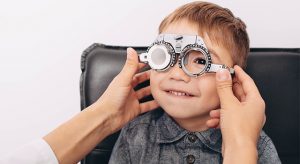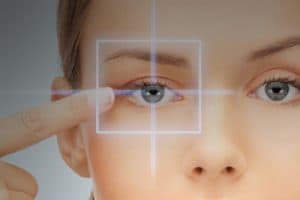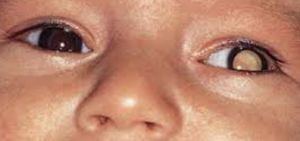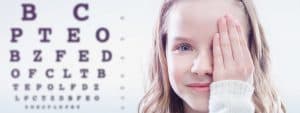Astigmatism is one of the most misunderstood optical terms…maybe because it is so hard to say?!
Astigmatism is a type of refractive error that causes distorted vision, usually at all distances.
It is a common vision condition that can be present at birth, or develop over time, and most frequently occurs together with myopia (nearsightedness) or hyperopia (farsightedness).
How common is astigmatism?
Astigmatism is found in:
- Up to 28% of children ages 5-17 years
- Approximately 1 in 3 people
What are the symptoms of astigmatism?
- Distorted vision
- Blurred vision
- Eyestrain
- Headaches
- Fatigue
- Squinting
Schedule an appointment with an eye doctor if you have experienced any of these symptoms.
SEE RELATED: What Is Myopia?
What causes astigmatism?
Astigmatism occurs when the curvature of the cornea, the front of the eye, is irregularly shaped. In normal circumstances, the cornea is a spherical shape, like a basketball or baseball.
Astigmatism occurs when the cornea is closer to an oval shape, much like a football shape.
This oval shape consequently prevents light from refracting properly, and focusing accurately on the retina— resulting in blurred or distorted vision.
There are different causes of astigmatism:
- Regular corneal astigmatism is typically genetic, and the most common type of astigmatism. It occurs when the cornea is oval shaped.
- Irregular corneal astigmatism may result from:
- An eye injury
- Certain eye surgeries
- Keratoconus– an ocular disease that causes thinning of the cornea.
- Lenticular astigmatism is caused by an irregular curvature of the eye lens.
How is astigmatism diagnosed?
Astigmatism is only diagnosed during an eye exam. The eye doctor may ask your child to look at lines spanned over 360 degrees to see which are more in focus. They may also use retinoscopy and cross-cylinder tests. During the retinoscopy test, your eye doctor will shine a light into your child’s eye, while holding a series of lenses in front of the eye, to determine the degree of astigmatism.
The cross-cylinder test requires the child to look through lenses to view parallel lines, both vertical and horizontal. The eye doctor will then measure which lens power enables all of the lines to appear clearly.
Most eye doctors have an auto-refractor which provides an automatic measurement of the child’s optical prescription, while the child looks at a colorful teddy bear or balloon. Auto-refractors are only used as a guide, and do not provide the most accurate measurements.
How is astigmatism treated?
Eyeglasses and contact lenses
Astigmatism is usually corrected with eyeglasses or contact lenses. An optical prescription will have a value to indicate the cylinder lens power marked under ‘cyl’— this is the correction for astigmatism.
Contact lenses used for correction of astigmatism are called ‘toric’ lenses. If you have mild or regular astigmatism, then soft disposable contact lenses can be used. However for higher levels or irregular astigmatism, hard RGP lenses or scleral lenses might be necessary.
Laser treatment
Refractive laser surgery, such as LASIK or PRK, are laser procedures that change the shape of the cornea. These may be recommended for patients over the age of 20, if they dislike wearing their eyeglasses or contacts, or if their corrective eyewear is insufficient in treating their astigmatism.
While laser treatments have been proven effective, there are risks of side effects, such as dry eye or distorted vision.
Astigmatism is a condition that causes distorted or blurry vision and can be a source of headaches, eye strain or fatigue and should be treated as soon as possible to alleviate symptoms.
LEARN MORE: Guide to Pediatric Eye Conditions
This condition can worsen over time, but is easily treated with glasses or contact lenses. Schedule a regular eye exam as they are essential to monitor your child’s visual acuity, and to ensure they enjoy clear and comfortable vision.









